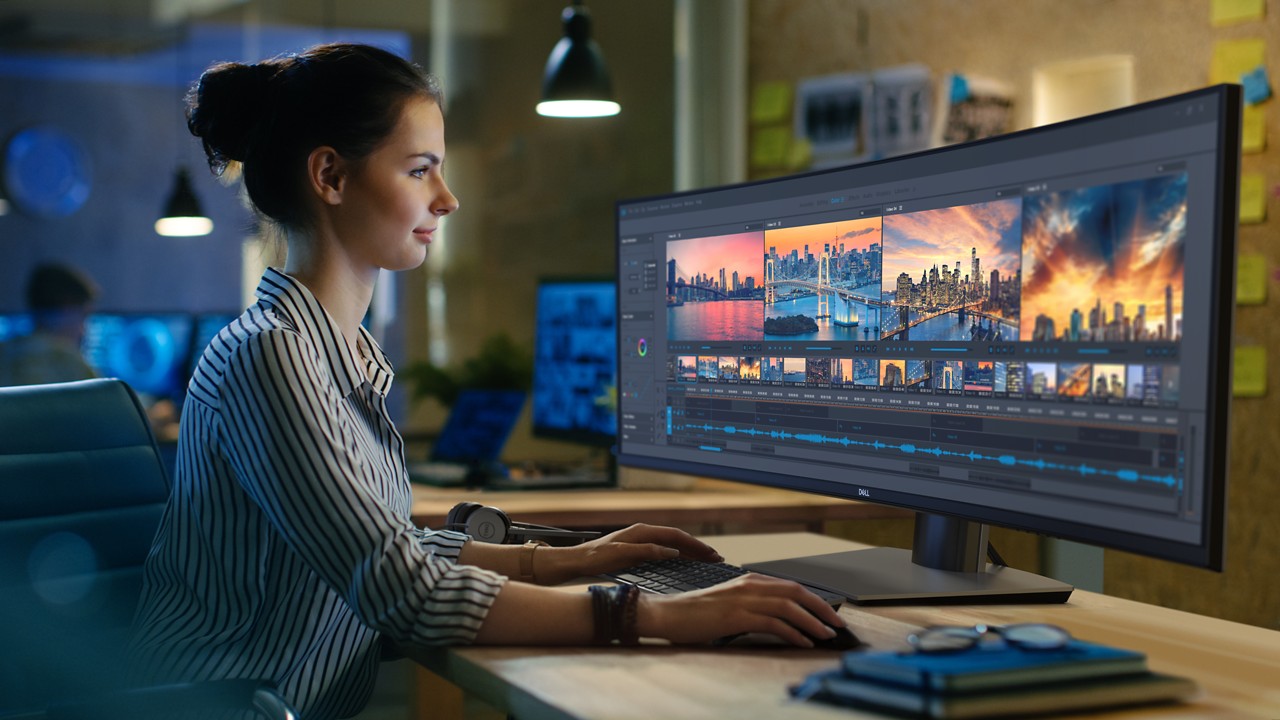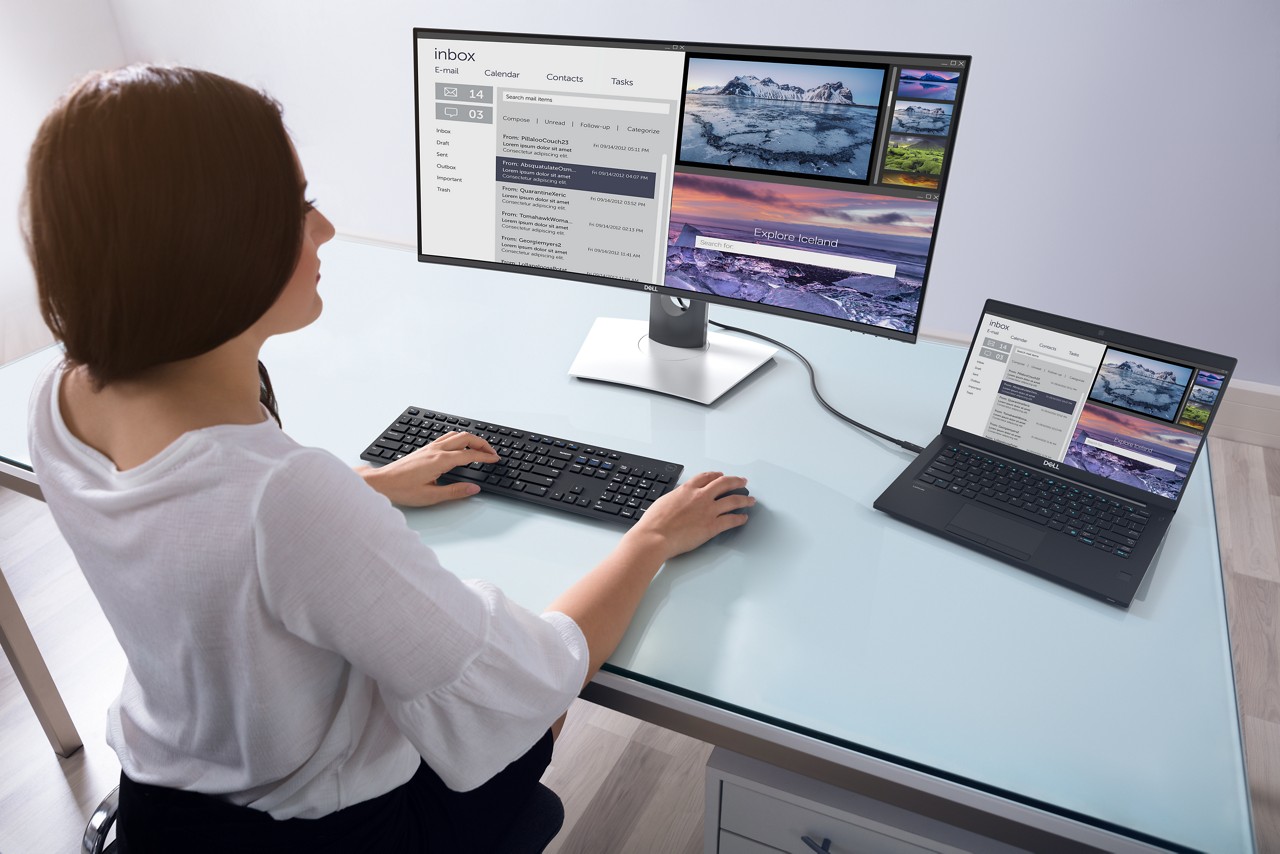 “Future of Work” as described by IDC is an evolutionary journey of how emerging technologies and demographic changes are impacting the way work is done. To boost productivity and foster innovation, companies are moving towards empowering employees with new technologies, offering them more choices and even embracing new office designs, all in the hopes for better talent attraction and retention. At Dell, the impact of technology and how it boosts productivity and innovation have always been at our roots. Because of this, we partnered with IDC to identify what key Future of Work trends impact monitors in particular and how that will continue to evolve over the years. The six trends, as outlined in the IDC paper, The Future of Work: Embracing New Dynamics, Creating New Experiences, are:
“Future of Work” as described by IDC is an evolutionary journey of how emerging technologies and demographic changes are impacting the way work is done. To boost productivity and foster innovation, companies are moving towards empowering employees with new technologies, offering them more choices and even embracing new office designs, all in the hopes for better talent attraction and retention. At Dell, the impact of technology and how it boosts productivity and innovation have always been at our roots. Because of this, we partnered with IDC to identify what key Future of Work trends impact monitors in particular and how that will continue to evolve over the years. The six trends, as outlined in the IDC paper, The Future of Work: Embracing New Dynamics, Creating New Experiences, are:
- Monitors are a key enabler for superior digital experiences
As the war for attracting and retaining the best talent intensifies, organizations are placing an increasing importance on Employee Experience (EX). IDC predicts that by 2021, at least 60% of Forbes Global 2000 (G2000)[1] companies will actively monitor and manage EX, utilizing EX as a key differentiator to build and maintain business relationships.[2] We expect to see flexible working policies, better workspace designs, and employees given a choice of devices to help improve productivity and efficiency as part of providing a better employee experience. Giving employees choice of work device will have a direct impact on worker effectiveness.
Monitors will continue to be the anchor point for productivity and remain the primary gateway to view, create and interact with digital content. Therefore, it is important to have a robust monitors strategy that keeps in mind the future needs of both employees and customers.
- Need for better monitor & visualization technologies are on the rise due to increasing use of artificial intelligence and 3D Tools
IDC forecasts that 3rd Platform technologies will drive information and communications technology (ICT) spending to more than US$6 trillion by 2022. According to the World Economic Forum, 133 million new roles will emerge that will reclassify work between humans and machines; AI alone is expected to create 58 million net new jobs in the next few years.
As IDC notes in the paper, the unprecedented growth of AI and 3D tools, as well as the use of AR/VR technologies, will impact the use of monitors as most of the digital content creation, 3D modeling and data visualization continue to be done on desktop monitors by employees.
These trends will continue to drive the demand for high performance monitors with richer color coverage, higher resolution, larger sizes and newer form factors with digital connectivity to support new workloads and technologies over the next few years for a variety of data-centric and design tasks.
- Monitors are adapting to new workspace trends and changing demographics
Mobility in the workplace is an up and coming strategic approach that offers employees greater freedom to work anywhere and empowers them with technologies to be more productive. Hotdesking, hoteling trends, co-working and increased shared spaces in offices are fueling mobile tech discussions.
IDC predicts that by 2021, demand for top talent will have resulted in 65% of G2000 companies offering coworking and remote-work options that leverage pervasive access to enterprise and collaboration applications.[2]
Dell sees monitors aligning with these trends, as they become slimmer, lighter and easy to connect. Several concepts — from modular designs, lightweight, easy to connect monitors with USB-C support and even foldable displays have emerged in recent years. As workspaces continue to evolve, we expect to see new form factors and more specialized monitors based on tasks or other productivity needs.
- Considerations for employee well-being and better ergonomics
Organizations are now increasingly focusing on employee well-being for compliance and improving talent attraction and retention. The European Parliament formally proclaimed the European Pillar of Social Rights committed to providing a healthy, safe and well-adapted work environment for workers in the European Union. In the U.S., the Occupational Safety and Health Administration (OSHAct) tools ensure that employers promptly correct hazardous working conditions. IDC forecasts that by 2021, 60% of G2000 companies will have adopted a future workspace model that is a flexible, intelligent, collaborative virtual/physical work environment improving employee experience and productivity2. This has led to the use of new practices and technologies to improve health and safety at work.
We are seeing initiatives take advantage of new devices and form factors, simulated trainings, open workspace designs, standing desks, and ultrawide curved monitors for better viewing angles. There is also a push for better ergonomics in monitors. Features include height adjustability to support better posture and blue light emission reduction for a more comfortable viewing experience. This will continue to reshape the entire workspace design and move employers to recognize that monitors impact their health and well-being.
- Gaming and e-sports are driving consumer demand for richer content
IDC expects the number of active PC gamers between 2017 and 2019, to grow by 10%, approaching one billion gamers, while the gaming PC market and the PC games market are expected to grow to 25 million (+19%) and US$35 billion (+7%) respectively. The explosive growth of gamers and the rapidly expanding universe of creators are expected to drive the demand for higher performance monitors. These include graphic artists and photographers who require precise color accuracy and high pixel count, to game developers who need responsive and high-resolution monitors to enjoy the immersive feel of playing AAA titles. For data scientists to work productively, one monitor is not enough; they need multiple monitors to simultaneously view multiple data streams in real time. The content creation ecosystem continues to expand outward affecting everyone from device makers, to content developers, to advertisers and even consumers.
The demand for monitors will continue to grow, with the rise of new gaming and content studios, and the use of richer content by knowledge workers and marketing teams. In 2017, only 7% of monitor shipments were above US$300. By 2022, the US$300+ end of the monitor market could approach 20%.
- USB-C: Power to the user, simplicity to IT
 Preparing for a future workforce entails a wider, more flexible device portfolio. Wider device portfolios likely spell happier and more productive employees, but they also spell massive I/O port, cable and dongle disruption which in turn incurs significant cost and headaches for IT.
Preparing for a future workforce entails a wider, more flexible device portfolio. Wider device portfolios likely spell happier and more productive employees, but they also spell massive I/O port, cable and dongle disruption which in turn incurs significant cost and headaches for IT.
In 2018, USB-C was embedded in nearly half of all notebooks shipped. IDC expects this number to be closer to 1 in 3 by 2022. The consolidation of ports and protocols to one can help IT manage what has historically been clumsy I/O transitions.
USB-C not only delivers a higher throughput, faster speeds and supports many protocols, but it also helps organizations simplify on accessories and cabling. It would be wise for organizations to look into enabling new, more powerful workloads for their end users ― while avoiding headaches for IT ― to start thinking about USB-C monitors, PCs and peripherals.
All in all, the Future of Work, as viewed by IDC, means supporting a future workforce and powering future workloads. Supporting a future workforce entails democratizing the device chain to better allow employees to work on their terms. This will also drive organization-wide productivity and focus on employee experience and well-being, beyond just cost considerations. Driving future workloads necessitates better tools, specifically better ways to capture, visualize, process and collaborate on the impending data deluge.
As emerging technology and demographic changes continue to impact the workplace, monitors will continue to evolve. Forward-thinking companies at the forefront of these considerations will witness productivity and employee satisfaction gains simply by putting a little bit more care and flexibility into their monitor strategies.
Interested in reading more? Download the full paper here.
[1] Forbes, Editors Pick (June 2018), Global 2000: The World’s Largest Public Companies
[2] IDC FutureScape: Worldwide Future of Work 2019 Predictions
